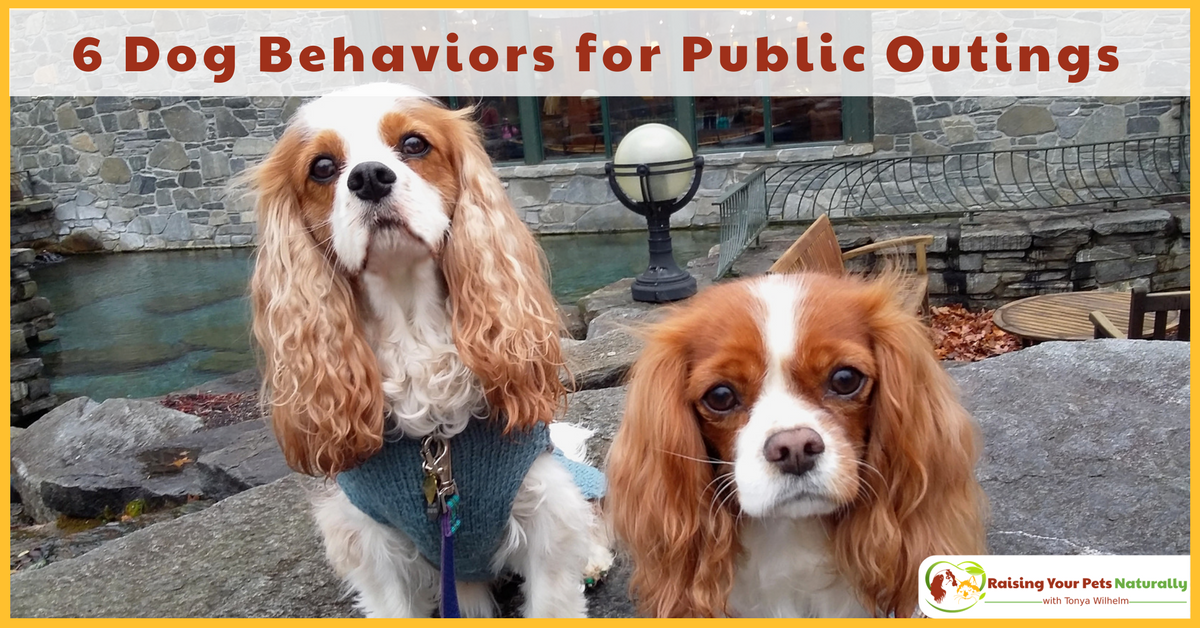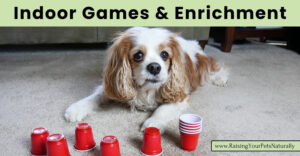Google Adsense—>

Positive Dog Training
Dog Training Commands for The Well-Traveled Dog

How to help your dog behave better in public.
Have you ever been a little embarrassed by your dog’s behavior in public? Maybe he is a rock star at home, but out and about, he loses all his manners and dog training skills. Even worse, maybe you and your BFF like to take dog-friendly adventures together and her dog is amazingly well-behaved, while your little monkey is all over the place. Today is your dog’s lucky day. I’m going to help you and your dog with is outdoor manners and training. But I’ll warn you. You will have to work and practice with your dog regularly if you want Fido to be chill and polite—it’s not something a magic wand can fix. Is anything?
My top 6 Favorite Dog Behaviors for Public Outings
Sit: I personally love using the Sit Cue when standing in line with Dexter. When we are out and about and waiting in line for something, sit is a lovely cue to ask Dexter to perform. By sitting, he is stationary and in a place I feel comfortable with. He’s not in the way, underfoot or sniffing something I’d rather he not.
Watch: I love using the Watch Cue in a proactive manner. In other words, if I see something that Dexter may find really exciting, say a cat at a pet expo, if I ask him to Watch Me as we walk past, he won’t even know there was a kitty a few feet away.
Down: The Down Cue is another great stationary behavior to teach a dog for dog adventures. It’s important to realize that the down behavior can be a little harder for a dog to perform out in public because a stressed dog or overly-excited dog may not feel comfortable being so low and vulnerable. It’s also harder for a dog to spring into action if he feels the need, which again ties into a dog’s comfort or excitability level.
Stay: Adding a Stay Cue to your dog’s sit or down helps keep your dog in place for longer periods of time. This is a great cue when taking your dog to a dog-friendly restaurant or watching a live event. Once again, you want to ensure your dog’s comfort level. I never ask or recommend asking a dog to stay when he’s uncomfortable or stressed.
Leave It: Leave it is an amazing behavior cue, especially when you are out in public with your dog. If you don’t want your dog to eat that French fry on the ground? “Leave it” to the rescue!
Loose Leash Walking: A must if you want to enjoy your dog when out in public. Nothing is worse than trying to walk your dog in tight situations with him straining at the end of the leash.
Refresh Basic Dog Training at Home
It’s time to pull out the healthy dog treats and do a refresh of your dog’s behavior cues. It’s a good idea at this refresh stage to reward your dog often to show him how enjoyable and valuable training and listening really is. Once your dog masters your favorite dog training behaviors at home, slowly increase the distractions. When increasing distractions, increase the reward value (more yummy) and decrease your criteria (5 second stay vs 30 second stay).
When you hit the public adventures with your dog, don’t forget the snacks! I’m also a fan of providing Dexter a stuffed hollow toy with food during our dog-friendly restaurant trips. This allows him something to eat and focus on, then he usually settles into his own down stay, or should I say, down sleep, behavior for the rest of the meal. Win-win.
With a little training and a few basic dog behavior cues, you and your dog can master outdoor adventures.
Your questions or comments are welcome below.
Are you looking for even more ways to stay up to date with Raising Your Pets Naturally? Sign up for the newsletter for more tips and promotions. Don’t forget to be social and Like, Follow and Subscribe. Comments below are always welcome.
Facebook Twitter Pinterest Instagram YouTube
 |
 |
 |
 |
Google Adsense—>






I am starting today to use the “watch” command to get my dog to focus on me when needed. I have a serious problem with my dog in the car. We travel with her on weekends to the same place and when we arrive there and upon return she insanely starts barking and will not look at me at all. I try to talk calmly to her and get her to sit but she just won’t listen. I’ve tried stopping the car and just sitting in it, but she doesn’t calm down until she is out of the car. I’ve also tried holding her when I’m not driving, but she won’t calm down then either. I have tried filling a kong with peanut butter and this is somewhat successful until the car stops. When I have errands to run I used to like to take her if it’s not hot out, but now I can’t because she has started to do the same routine with every stop. As you can imagine, the situation grows more intense all the time.
Great for attempting to work your gal on watch and traveling and adventures. This article has a few tips on desensitizing to car rides- https://raisingyourpetsnaturally.com/dog-car-sickness I’d start with that. The goal is to get comfortable and relaxed, not just getting in the car and going to a stimulating adventure. That would be step one, which may take a lot of time, depends on her behavior and how often you practice. Daily or twice daily will move you along quicker than once a week practice sessions. I do offer phone/Skype sessions too, if you want to discuss your case in more detail with a training plan.
I do offer phone/Skype sessions too, if you want to discuss your case in more detail with a training plan. 